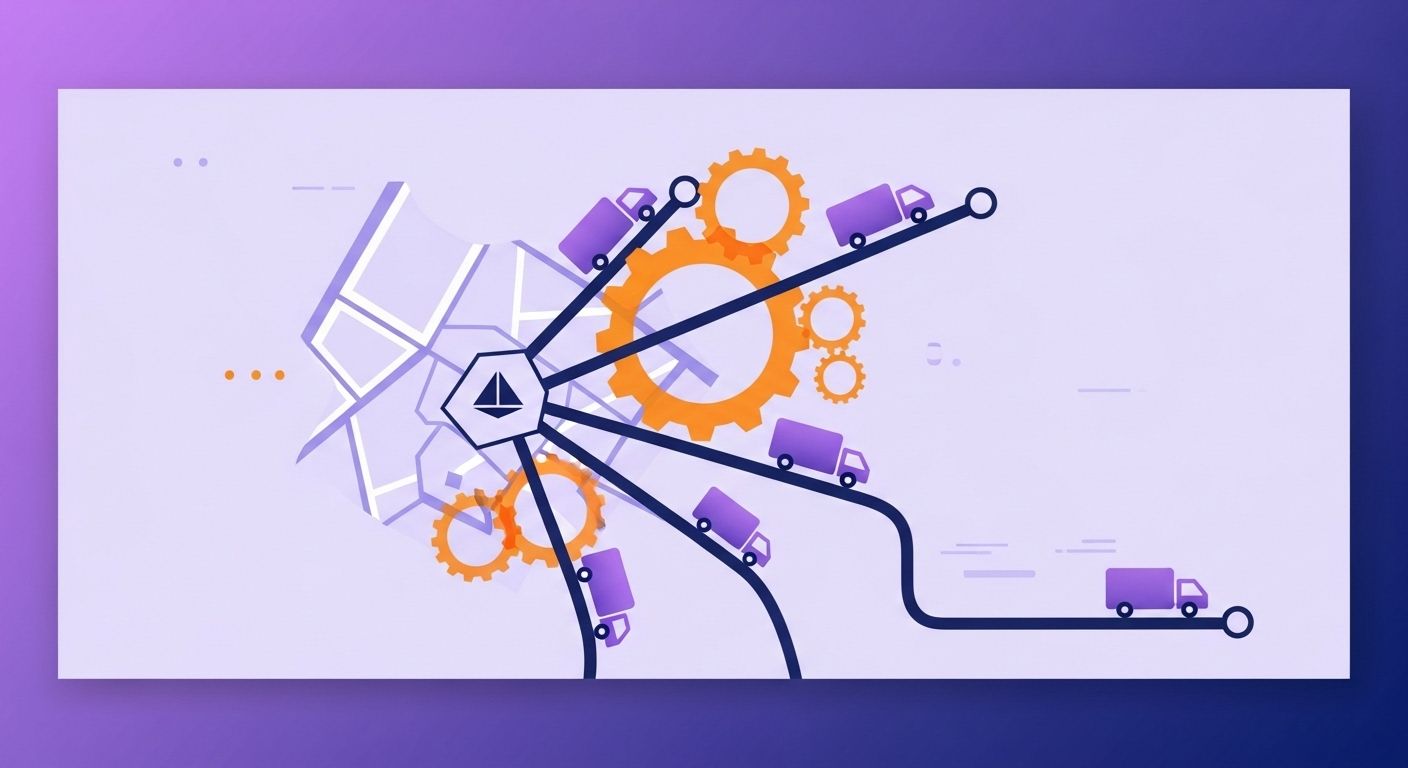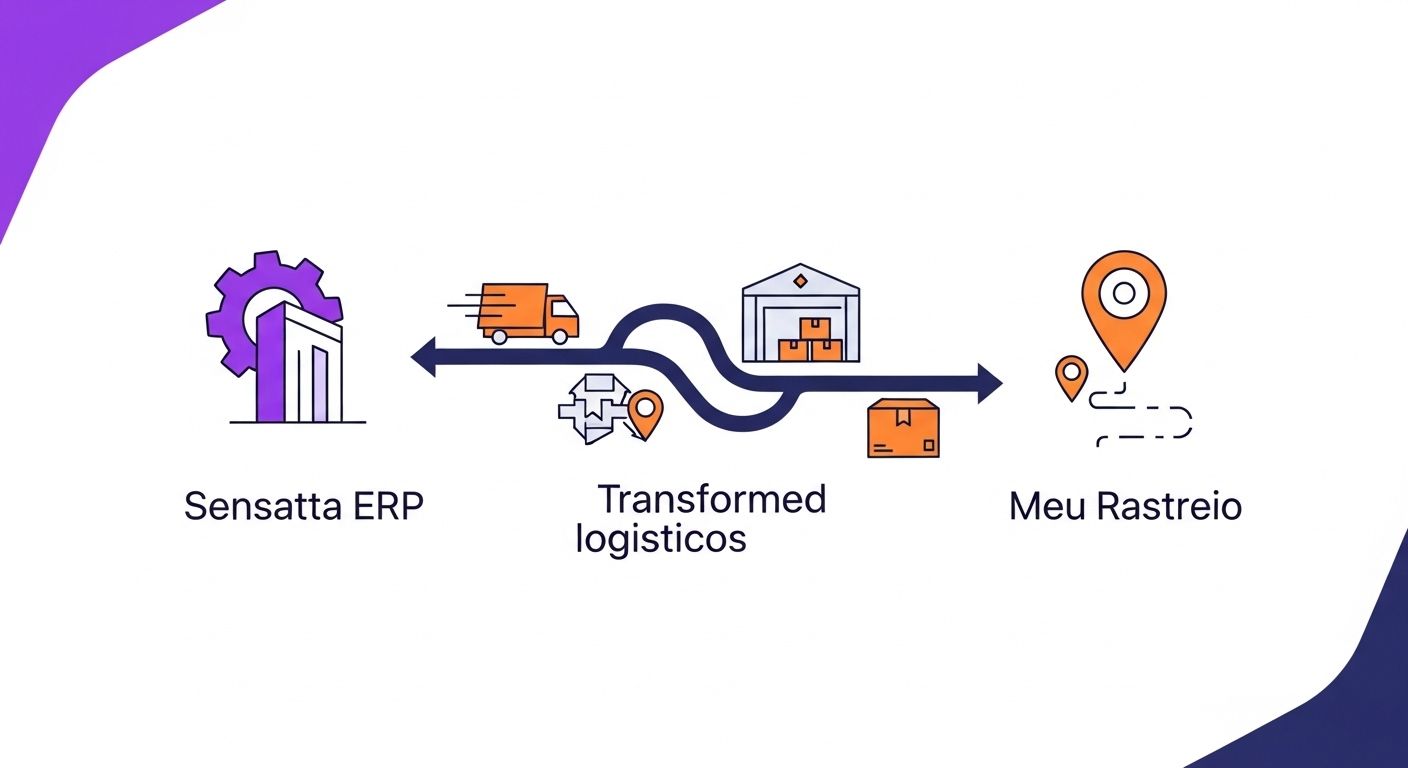Maximize Delivery Efficiency with Intelligent Route Planning
The pressure for shorter lead times, lower costs, and higher customer expectations has put logistics at the center of growth strategy. While many teams still rely on spreadsheets and manual routes, companies adopting intelligent route planning are gaining speed, predictability, and margin. In this article, you’ll see how to modernize delivery management, what changes when you use a route planner, and how Meu Rastreio’s Route Planner transforms operations—from decision-making to bottom-line results.
The challenge: efficiency, cost, and customer experience
In urban distribution and last-mile operations, a few obstacles keep showing up:
- Manual planning that takes hours and depends on a few key people
- Under-optimized routes with high miles driven and idle vehicles
- Delivery time windows and constraints not accounted for (traffic restrictions, loading/unloading limits, vehicle capacity, driver skills)
- Traffic and unforeseen events that break the plan without a quick response
- Lack of real-time visibility and difficulty proving delivery (POD)
- Pressure to reduce cost per delivery without losing service level (OTIF)
Market studies show the last mile can account for up to 50% of total logistics costs. In tight-margin scenarios, every minute, mile, and redelivery matters. The good news: modern routing and execution technology connects planning and the field—and that changes the game.
What intelligent route planning is and why it matters
Intelligent route planning uses algorithms to solve a complex problem in minutes: how to distribute a set of deliveries across vehicles and drivers, honoring constraints while maximizing efficiency. Variables include:
- Delivery time windows and SLAs
- Vehicle capacity (weight, volume, cube, pallets)
- Service time per stop and shift duration
- Geographic constraints, traffic restrictions, and rotation rules
- Driver skills and license classes/endorsements (specific vehicle types, refrigerated cargo)
- Start/end points, multiple depots, and combined pickup/delivery
The result is a feasible, optimized route plan with stop sequences, ETA estimates, and ideal load distribution. Beyond the “ideal plan,” modern systems enable dynamic re-optimization when the unexpected happens—avoiding rescheduling, rework, and extra cost.
How Meu Rastreio’s Route Planner solves it in practice
Optimize routes with multiple constraints
- Delivery time windows and priorities
- Per-vehicle capacity (weight, volume, SKU) and order mix
- Service and travel times with traffic data
- Pickups and deliveries on the same route
- Rules by region, customer, and driver
The optimization engine finds the best vehicle–stop combination to cut miles, idle time, and rehandling.
Reduce miles driven and fleet idle time
Smart optimization balances stops, avoids route crossovers, and reduces empty legs. In practice, operations see significant reductions in miles per route and cost per delivery, along with higher fleet utilization.
Execution and real-time visibility
After routes are published, drivers receive their itinerary in the app with turn-by-turn navigation and proof of delivery. The control tower sees:
- Route progress, delays, and exceptions
- Live ETAs and proactive customer communication
- Delivery evidence (photo, signature) and failure reasons
Planning and execution close the loop in a continuous improvement cycle.
Simple integration with your systems
Meu Rastreio connects with ERP, TMS, and marketplaces to import orders, addresses, and time windows—and export statuses and events. Via API, webhooks, or files, you avoid rework and keep data governance intact.
Experience built for rapid adoption
- Clear interface to import orders and configure rules
- What-if simulator to test cut-off policies and SLAs
- Role-based permissions (route planners, control tower, drivers)
- Ready-to-use performance reports and cost-per-delivery insights
In just a few hours, your team can move from spreadsheets to a robust, auditable flow.
Measurable benefits of route planning
While every operation is unique, you can expect gains such as:
- 10% to 25% reduction in miles driven
- 15% to 30% decrease in daily planning time
- 5% to 12% improvement in on-time delivery rate (OTIF: On-Time In-Full)
- Lower need for extra vehicles/third parties on peak days
- Fewer redeliveries and status calls (less customer friction)
- End-to-end visibility to drive data-based decisions
These gains combine immediate savings with a better customer experience—helping you protect revenue and create room to grow without inflating costs.
Practical use cases
E-commerce and last mile Scenario: 400 daily deliveries in a major city, 4-hour time windows, many buildings with loading/unloading restrictions. How the Route Planner helps:
- Clusters stops by proximity and time window to balance routes
- Honors restricted hours and factors average service time by address type
- Updates ETAs in real time for both the control tower and the end customer Expected result: fewer miles and delays, lower end-of-day rescheduling rate.
B2B distribution (wholesale and pharma) Scenario: Priority deliveries for Key Account A, multiple depots, and vehicles with different capacities. How the Route Planner helps:
- Prioritizes customers and optimizes loading by volume/weight
- Builds multi-depot routes and region-based planning
- Generates proof-of-delivery for audit and compliance Expected result: better fleet utilization, less rehandling, and compliance with critical SLAs.
Pickups and reverse logistics Scenario: Scheduled pickups at fixed times with daily variability in operations. How the Route Planner helps:
- Plans pickups and deliveries in the same itinerary
- Re-optimizes on cancellations and inserts new pickups on the fly
- Provides a consolidated view of the full cycle Expected result: higher stop density per route and fewer empty miles.
Trends shaping delivery management
- Data and AI for demand and ETA forecasting: better predictions reduce waiting windows and rework.
- Sustainability and cost: fewer miles and higher fill rate support carbon goals and lower cost per delivery.
- Omnichannel integration: unified inventory and orders require flexible routes and fast replanning.
- Customer experience: proactive ETA communication and proof of delivery are the new standard.
- Continuous analysis: from “plan and execute” to “plan, execute, measure, and optimize,” running short improvement cycles.
Companies aligning technology, data, and operational processes are ready to scale with predictability.
Best practices to implement and scale routing
- Start with reliable data: standardized addresses, clear time windows, and service times by customer type.
- Define baseline KPIs: miles per delivery, cost per order, OTIF, planning time, redelivery rate.
- Run a 2–4 week pilot: compare “current vs. optimized” on a representative sample.
- Enable your team: route planners, supervisors, and drivers should master the end-to-end flow.
- Close the loop with analysis: use reports to adjust rules and cut-offs and to measure ROI.
How Meu Rastreio stands out
- Operator-first routing: usability and fast setup
- Rich business rules without technical complexity
- Integrated execution with tracking and proof of delivery
- A single real-time view from order to doorstep
- Fast API integrations and hands-on operational support
When technology connects to what happens on the street, planning stops being a “theoretical exercise” and turns into concrete operational gains.
Conclusion: efficiency you can see on the bottom line
Maximizing delivery efficiency isn’t just about driving fewer miles. It’s about delivering more value per route: hitting delivery windows, reducing costs, and increasing visibility. With intelligent route planning and integrated execution, your operation gains predictability and scale.
Want to see it in action? Book a free demo of Meu Rastreio’s Route Planner and learn how to reduce costs, increase OTIF, and simplify day-to-day operations.
Talk to our team and get started today: https://meurastreio.app/pt-BR/roteirizador











